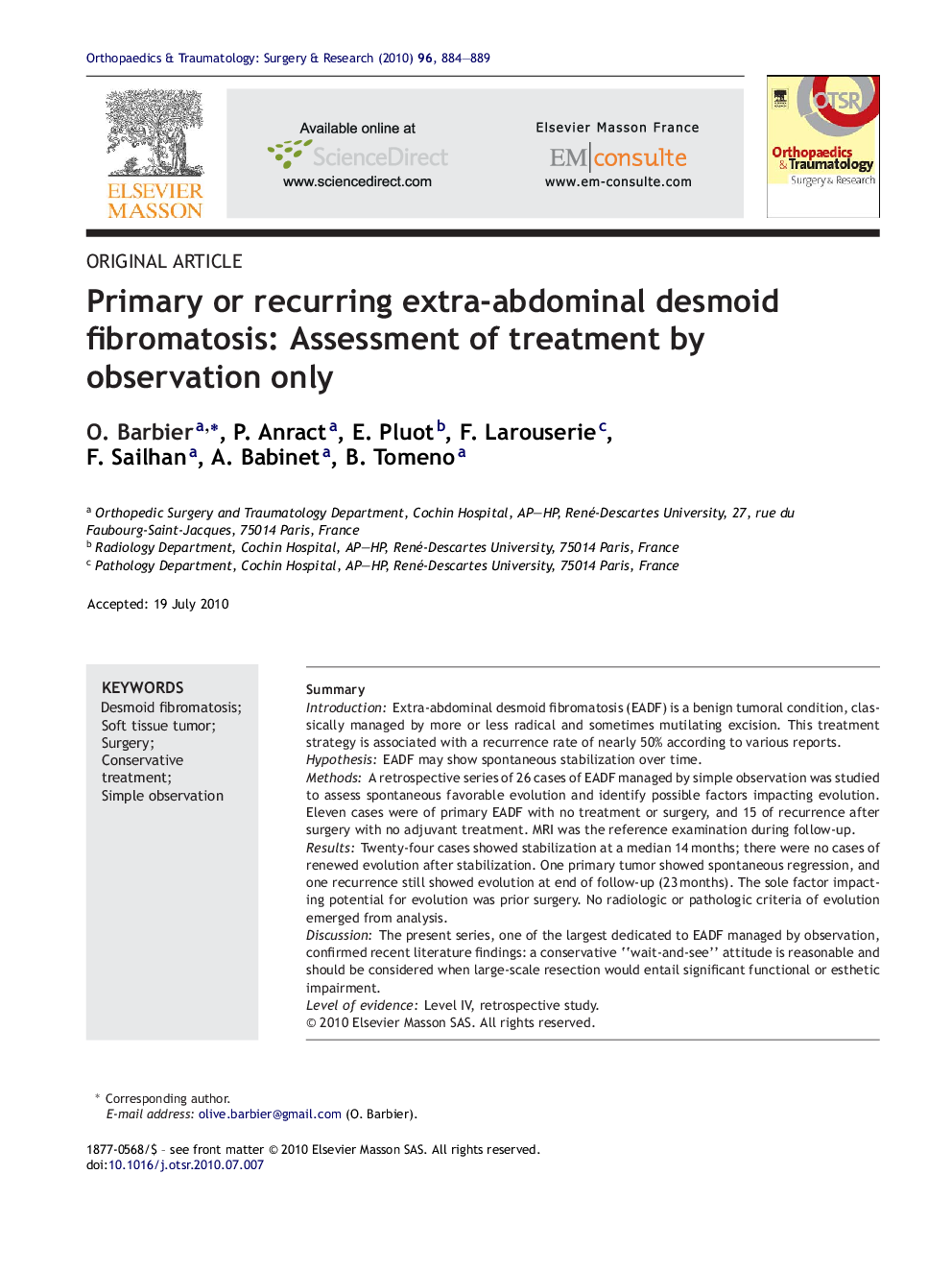| Article ID | Journal | Published Year | Pages | File Type |
|---|---|---|---|---|
| 4082477 | Orthopaedics & Traumatology: Surgery & Research | 2010 | 6 Pages |
SummaryIntroductionExtra-abdominal desmoid fibromatosis (EADF) is a benign tumoral condition, classically managed by more or less radical and sometimes mutilating excision. This treatment strategy is associated with a recurrence rate of nearly 50% according to various reports.HypothesisEADF may show spontaneous stabilization over time.MethodsA retrospective series of 26 cases of EADF managed by simple observation was studied to assess spontaneous favorable evolution and identify possible factors impacting evolution. Eleven cases were of primary EADF with no treatment or surgery, and 15 of recurrence after surgery with no adjuvant treatment. MRI was the reference examination during follow-up.ResultsTwenty-four cases showed stabilization at a median 14 months; there were no cases of renewed evolution after stabilization. One primary tumor showed spontaneous regression, and one recurrence still showed evolution at end of follow-up (23 months). The sole factor impacting potential for evolution was prior surgery. No radiologic or pathologic criteria of evolution emerged from analysis.DiscussionThe present series, one of the largest dedicated to EADF managed by observation, confirmed recent literature findings: a conservative “wait-and-see” attitude is reasonable and should be considered when large-scale resection would entail significant functional or esthetic impairment.Level of evidenceLevel IV, retrospective study.
